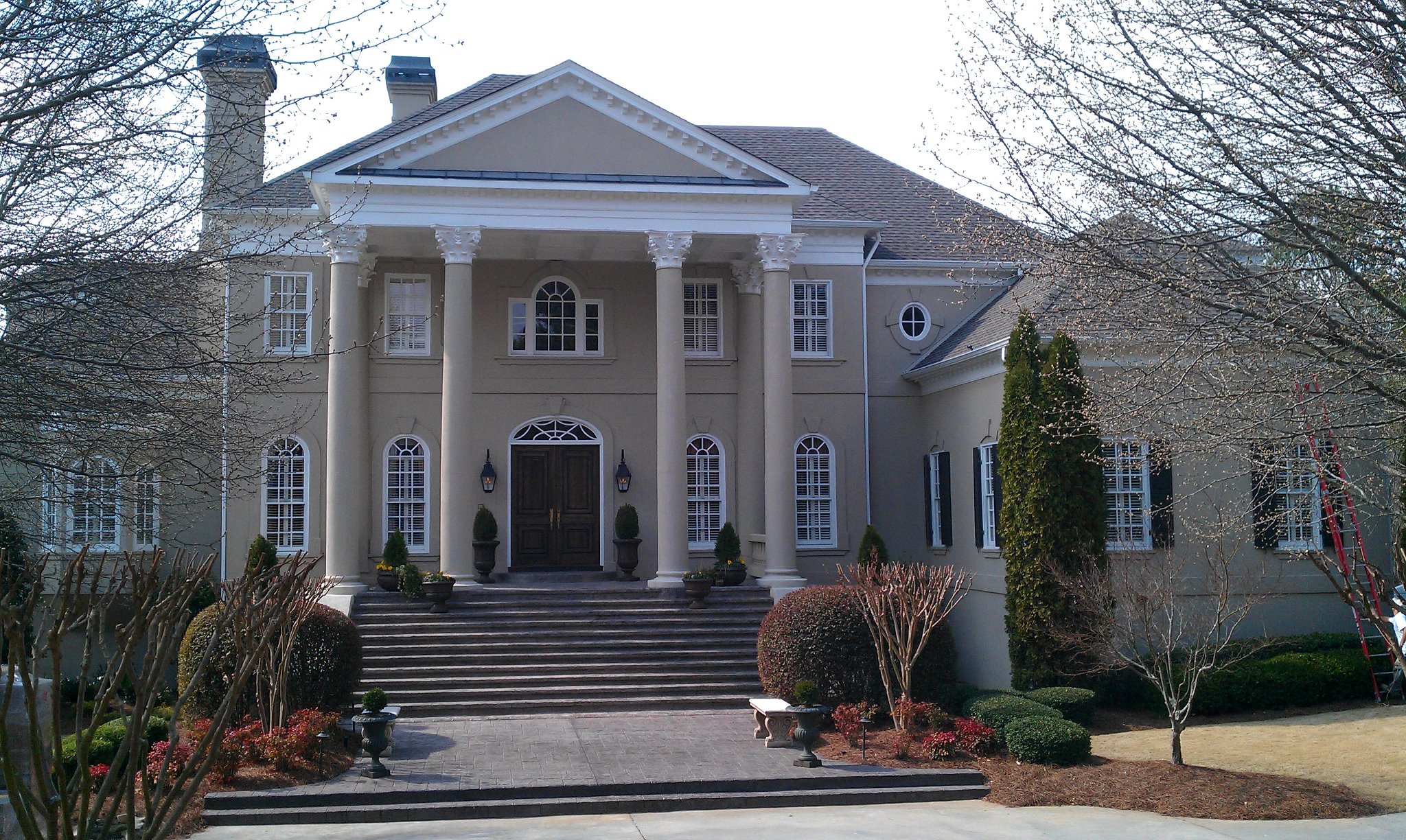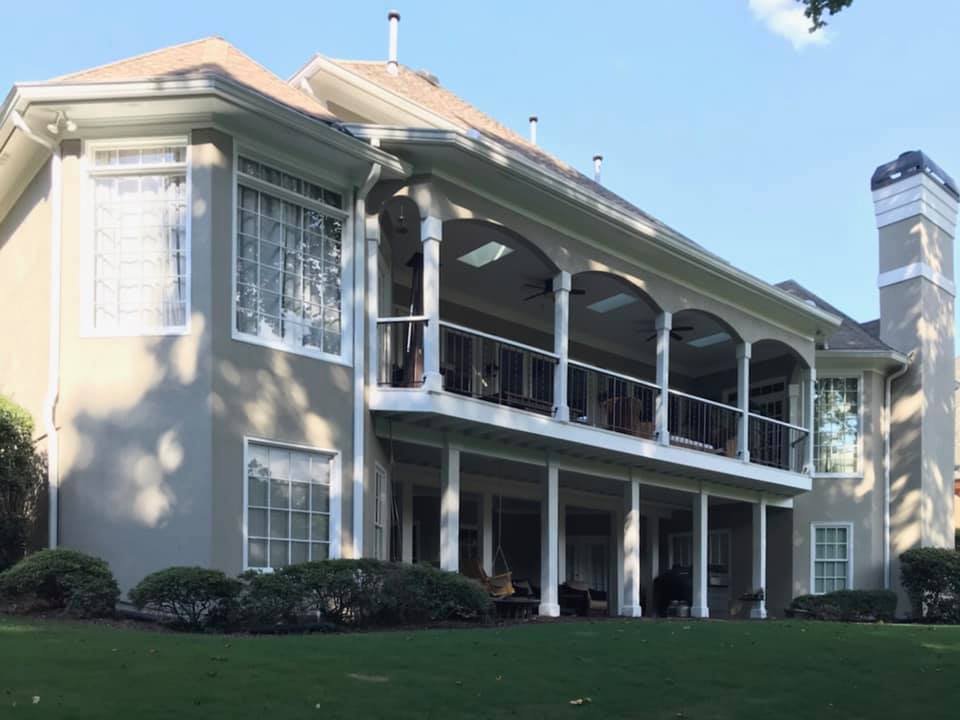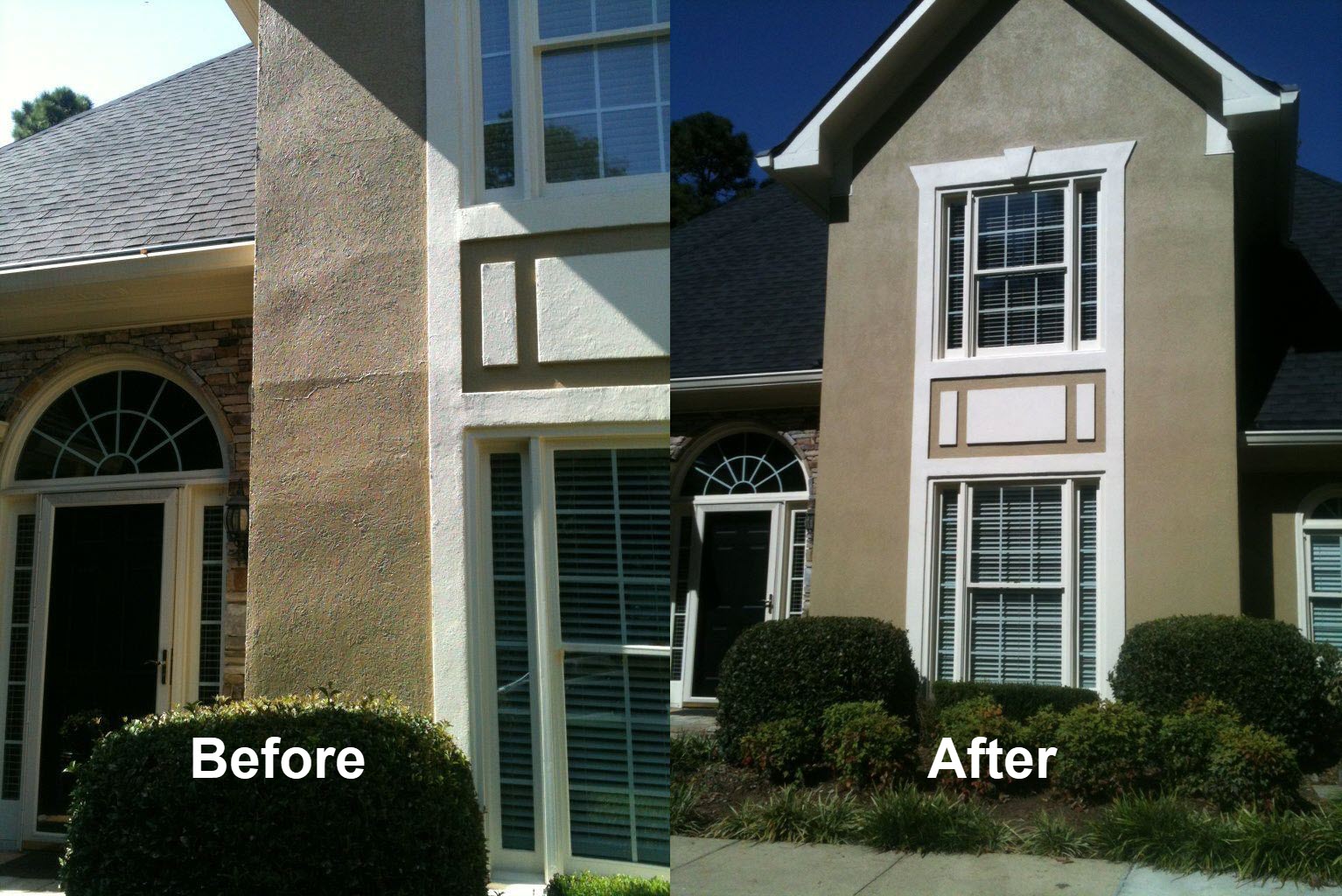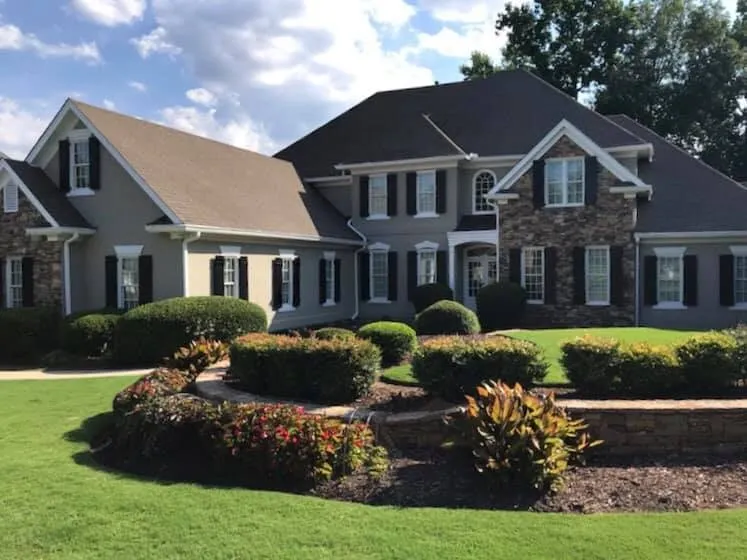Impact Damage Restorationin Vinings GA
Quick Repairs for Weather or Accident Damage
We Are Locally Owned & Operated For Over 24 Years
We Serve Businesses In And Around The Following Cities:
About Stucco Impact Repairs in Vinings, Georgia
Comprehensive Guide to Stucco Impact Repair in Vinings Georgia
Understanding the Necessity of Stucco Repair
In the bustling community of Vinings, Georgia, the aesthetic appeal and structural integrity of buildings significantly contribute to the town’s charming character. Among the many materials that enhance this appeal, stucco stands out due to its versatile nature and durability. However, over time, even the most well-installed stucco can suffer from impact damage, necessitating repairs. Addressing issues such as cracks, dents, and holes in stucco not only maintains the beauty of a property but also prevents further structural damage.
The significance of proper stucco repair extends beyond aesthetics. Stucco acts as a critical defensive layer, protecting homes and commercial buildings from harsh weather conditions, moisture, and other environmental stressors common in Georgia’s climate. Identifying and repairing impact damage in stucco swiftly is crucial to maintaining the protective barrier and avoiding more severe problems down the line. Advanced Stucco Repair, a reputable service provider in Vinings, Georgia, specializes in resolving such issues efficiently, ensuring both residential and commercial buildings remain secure and visually appealing.
The Process of Stucco Repair and Installation
Understanding the repair and installation process of stucco, including EIFS (Exterior Insulation and Finish System) and Dryvit, helps property owners make informed decisions. The process begins with a thorough inspection to assess the extent of the damage. Advanced Stucco Repair utilizes expert techniques to examine every facet of the stucco, identifying areas that require intervention.
Once the assessment is complete, the repair process is carefully planned. This involves cleaning the damaged area to remove any loose materials or debris. For minor damages like small holes or cracks, stucco crack fix techniques involve filling the gaps with a mixture that matches the original material, ensuring a seamless finish. Larger damages, such as significant impact dents or holes, demand more intricate solutions, including patching and sometimes reapplying stucco to ensure durability.
Installation of new stucco involves multiple stages. First, the surface is prepared by cleaning and smoothing it out to provide a stable base. A layer of wire mesh is often applied to provide a structure for the stucco to adhere to. The next step involves applying a scratch coat, followed by a brown coat, each requiring time to dry and cure properly. Finally, the finish coat is applied, which can be customized in texture and color based on the property owner’s preferences. This meticulous process guarantees a long-lasting and aesthetically pleasing finish.
Exceptions and Considerations for EIFS and Dryvit
While traditional stucco repair processes are straightforward, EIFS and Dryvit have their unique requirements. These systems are celebrated for their energy efficiency and design versatility, making them a popular choice in Vinings for both residential and commercial properties. However, they also require specialized handling, especially when it comes to repairs.
The key difference with EIFS and Dryvit is the additional insulation layer, making them more energy-efficient but also potentially more susceptible to water intrusion if not maintained correctly. Impact damage to EIFS or Dryvit can compromise the insulation, leading to energy loss and water damage. Advanced Stucco Repair approaches such repairs with a keen understanding of their complexity, ensuring that any EIFS dent repair or Dryvit patchwork maintains the integrity of the insulation while restoring the surface appearance.
During the repair of EIFS and Dryvit, care is taken to match the finish of the existing materials to maintain the property’s external appearance. The repair often involves cutting away the damaged materials, replacing the insulation if compromised, and then reapplying the finish. This intricate process underscores the importance of engaging skilled professionals, like those at Advanced Stucco Repair, who understand the distinct requirements of these modern stucco alternatives.
Benefits of Timely Stucco Repairs
The advantages of addressing stucco impact repair promptly are manifold. The most immediate benefit is the prevention of further damage. Impact damage, if left unaddressed, can lead to greater structural issues, as moisture can penetrate through cracks and holes, leading to mold and rot. In turn, this not only threatens the structural integrity of the building but also incurs significant repair costs over time.
For commercial properties in Vinings, the appearance of the building plays a vital role in the business’s reputation. A well-maintained facade projects a message of professionalism and attention to detail, which can enhance a company's stature in the community. Additionally, maintaining the stucco helps protect the interiors of commercial spaces, potentially saving thousands in heating, cooling, and subsequent water damage repairs.
Residential properties benefit from timely stucco repairs by preserving home value and curb appeal. In a community like Vinings, where property values are significant, maintaining an impeccable exterior can be a deciding factor in the eventual resale of a home. For residents who may not be planning a sale, the energy efficiency and protection from weather elements offer ongoing benefits.
Engaging Advanced Stucco Repair ensures that all repairs are completed to the highest standard, using quality materials and techniques that stand up to the local climate conditions. Their expertise in handling both traditional and modern stucco variations, such as EIFS and Dryvit, equips property owners with peace of mind that their buildings are well-protected and visually appealing.
Real-World Applications and Success Stories
The importance of effective stucco repair is evidenced by numerous real-world examples in Vinings, Georgia. One such instance involves a historic commercial building in the heart of Vinings. The structure, admired for its classic stucco facade, suffered noticeable impact damage after a severe storm. The damage threatened the aesthetic value and raised concerns about potential water intrusion. By employing Advanced Stucco Repair, the building's exterior was restored to its former glory, with no visible traces of the damage. This not only ensured the building continued to be a community landmark but also protected its structural integrity.
Residential properties have also greatly benefited, as seen in a neighborhood popular for its beautiful stucco homes. A family discovered several cracks and a significant hole in their home’s stucco exterior, a result of an unnoticed fallen branch during a storm. Misgivings about escalating repair costs were alleviated by Advanced Stucco Repair’s comprehensive service, which promptly fixed the hole in stucco, restoring both appearance and barrier function. This swift action prevented further water damage, saving the family from costly future repairs.
These success stories underscore the necessity and efficacy of engaging professional stucco repair services. Ensuring that work is performed to the highest standards means property owners can relax, knowing their investments are protected against environmental elements and time.
Why Choose Advanced Stucco Repair
Advanced Stucco Repair sets itself apart in the Vinings area through its dedication to quality and customer satisfaction. Unlike other service providers, their approach is tailored to the specific needs of each property, accounting for the type of stucco system and the severity of the damage. They employ trained professionals with a deep understanding of the materials and techniques used in stucco installation and repair.
Their success lies not just in fixing visible issues but also in diagnosing potential future problems. This proactive approach ensures that properties remain protected long after repairs are completed. Advanced Stucco Repair emphasizes the long-term benefits of quality repairs and installations, helping property owners understand the value of their investment in professional services.
The testimonials from satisfied clients in the Vinings area highlight the transformative changes brought about by their meticulous work. From improving energy efficiency in homes with stucco crack fixes to ensuring that businesses project the best image through pristine exteriors, Advanced Stucco Repair remains a top choice for those seeking reliable solutions for their stucco issues.
By entrusting your property to Advanced Stucco Repair, you are assured of a service that combines expert craftsmanship with a genuine understanding of how to maintain and enhance property value through strategic repairs and installations. Their commitment to excellence is reflected in every project they undertake, making them a preferred partner for both residential and commercial stucco services in Vinings, Georgia.
Stucco Impact Repairs Gallery



Call Us Today to receive your Free Quote for
Stucco Impact Repair in Vinings
Serving: Vinings, Georgia

About Vinings, Georgia
Early on, Vinings was known as Crossroads, and then Paces, after Hardy Pace, circa 1830. He operated Pace's Ferry across the Chattahoochee River, in this area between Atlanta, Buckhead, and Smyrna. Paces Ferry Road is still the main east–west road through Vinings. The Western and Atlantic Railroad laid rail tracks from Chattanooga, Tennessee to Atlanta in the 1840s. Vinings became a construction station for the railroad, and was inadvertently named for William H. Vining, as he worked on the railroad construction of "Vining's Bridge" laying tracks in the area. The railroad is still state-owned as it was from the beginning, and is now leased to CSX.
The Union Army occupied the Vinings area during Sherman's Atlanta Campaign of the American Civil War in 1864 and the subsequent March to the Sea. Pace's home, which had been used as a hospital for Union troops, was destroyed in the process. Vinings recovered after the war, as Governor Brown leased the railroad to Vinings to bring passengers to the springs and pavilions built to encourage a respite from the reconstruction of Atlanta. Vinings was officially recognized as a community in 1904, the same year the one-lane bridge was constructed across the Chattahoochee River. The town was never incorporated, though it had been discussed whether it should become a "township".
The Vinings Historic Preservation Society seeks to keep the town's history alive.
Vinings is located at 33°51′58.9″N 84°27′57.85″W / 33.866361°N 84.4660694°W. According to the United States Census Bureau, the CDP has a total area of 3.3 square miles (8.5 km), of which 3.2 square miles (8.3 km) is land and 0.1 square miles (0.26 km), or 3.34%, is water.
| Census | Pop. | Note | %± |
|---|---|---|---|
| 1990 | 7,417 | — | |
| 2000 | 9,677 | 30.5% | |
| 2010 | 9,734 | 0.6% | |
| 2020 | 12,581 | 29.2% | |
| U.S. Decennial Census 1850-1870 1870-1880 1890-1910 1920-1930 1940 1950 1960 1970 1980 1990 2000 2010 2020 | |||
Vinings was first listed as a CDP in the 1990 U.S. Census.
| Race / Ethnicity (NH = Non-Hispanic) | Pop 2000 | Pop 2010 | Pop 2020 | % 2000 | % 2010 | % 2020 |
|---|---|---|---|---|---|---|
| White alone (NH) | 7,805 | 5,913 | 6,459 | 80.66% | 60.75% | 51.34% |
| Black or African American alone (NH) | 1,155 | 2,679 | 4,049 | 11.94% | 27.52% | 32.18% |
| Native American or Alaska Native alone (NH) | 17 | 12 | 13 | 0.18% | 0.12% | 0.10% |
| Asian alone (NH) | 357 | 402 | 689 | 3.69% | 4.13% | 5.48% |
| Native Hawaiian or Pacific Islander alone (NH) | 2 | 6 | 3 | 0.02% | 0.06% | 0.02% |
| Other race alone (NH) | 15 | 38 | 62 | 0.16% | 0.39% | 0.49% |
| Mixed race or Multiracial (NH) | 107 | 182 | 476 | 1.11% | 1.87% | 3.78% |
| Hispanic or Latino (any race) | 219 | 502 | 830 | 2.26% | 5.16% | 6.60% |
| Total | 9,677 | 9,734 | 12,581 | 100.00% | 100.00% | 100.00% |
As of the census of 2000, there were 9,677 people, 5,227 households, and 1,740 families residing in the CDP. The population density was 3,039.2 inhabitants per square mile (1,173.4/km). There were 5,670 housing units at an average density of 1,780.8 per square mile (687.6/km). The racial makeup of the CDP was 81.97% White, 12.09% African American, 0.19% Native American, 3.69% Asian, 0.03% Pacific Islander, 0.83% from other races, and 1.21% from two or more races. Hispanic or Latino of any race were 2.26% of the population.
There were 5,227 households, out of which 11.5% had children under the age of 18 living with them, 26.3% were married couples living together, 5.2% had a female householder with no husband present, and 66.7% were non-families. 43.3% of all households were made up of individuals, and 2.4% had someone living alone who was 65 years of age or older. The average household size was 1.84 and the average family size was 2.61.
In the CDP, the population was spread out, with 10.8% under the age of 18, 15.5% from 18 to 24, 50.9% from 25 to 44, 16.6% from 45 to 64, and 6.1% who were 65 years of age or older. The median age was 30 years. For every 100 females, there were 92.5 males. For every 100 females age 18 and over, there were 91.8 males.
The median income for a household in the CDP was $88,876, and the median income for a family was $105,121. Males had a median income of $78,685 versus $46,315 for females. The per capita income for the CDP was $61,068. About 3.3% of families and 5.2% of the population were below the poverty line, including 4.1% of those under age 18 and 3.9% of those age 65 or over.
Vinings residents attend schools in the Cobb County School District. Residents are zoned to Teasley Elementary School, Campbell Middle School, and Campbell High School.
Vinings is unincorporated, and is therefore under the jurisdiction of Cobb's county commission and other public services. After the success of Sandy Springs, there was discussion and at least one public meeting on whether the town should also incorporate as a "city" (the only type of municipality in Georgia). With residents evenly split, there was no consensus, and the idea was shelved mainly due to concerns about potential property tax increases.
However, some expressed optimism that the Georgia Township Act might allow it to become a "township", equivalent in function to a village in many other U.S. states. This would allow it control of zoning and other land uses (the major dispute with the county), and as written would cap additional property taxes at a half mill (0.5 per mille, or 50¢ per $1000 annually). As of 2013, the bill has not been reintroduced in the Georgia General Assembly.
The proposed boundaries were Interstate 285 along the northwest side, Interstate 75 at the northeast end, the Chattahoochee River on the southeast side, and Atlanta Road (old US 41 until Cobb Parkway was built in the 1950s) at the southwest end.
